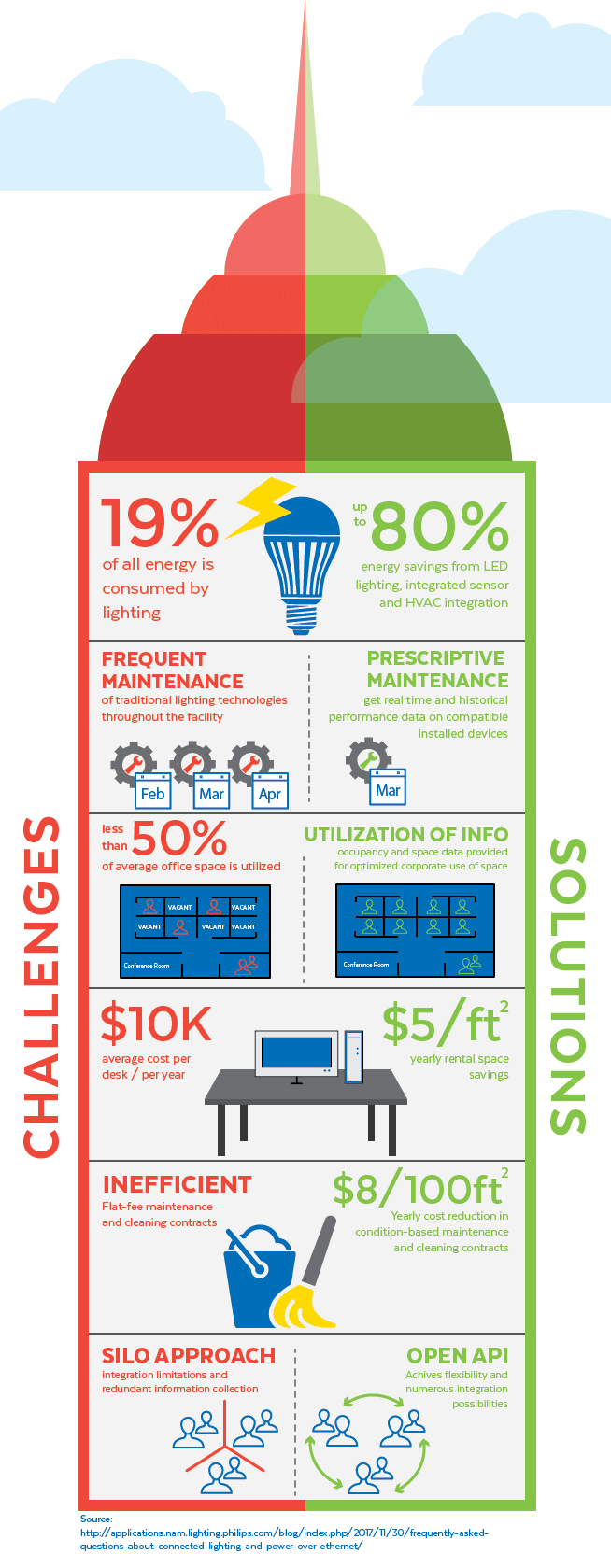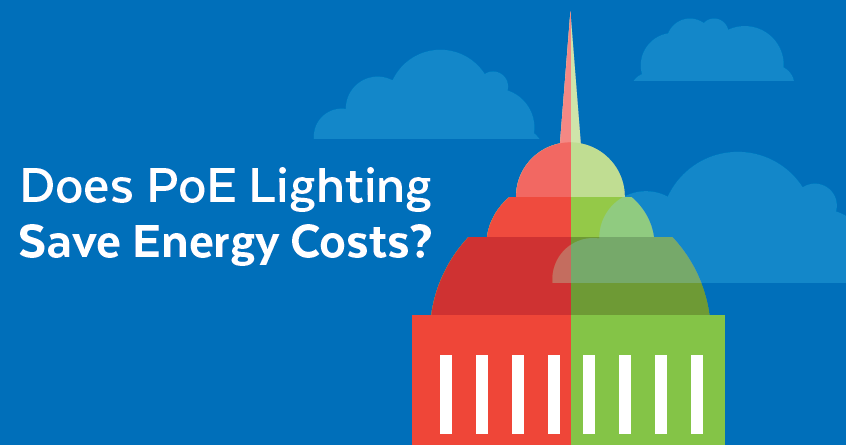Power over Ethernet (PoE) supports low voltage technologies like LED lighting systems, sensors, and HVAC controllers that have become standard in today’s commercial office building. PoE power devices (PD) draw less power than legacy devices, and because they are smart, they can turn off and on automatically. PoE energy costs are low and getting even lower, as smart office spaces are becoming more and more efficient. These sensing capabilities are making commercial office space more affordable for businesses to lease and own.
In this blog, Versa Technology will take a quick look at the energy-saving impact of PoE Lighting, its constellation of the attached devices, and the results of a recent study of its benefit in the smart building space.
Philips Study on Connected Lighting
The digital nature of LED technology brings illumination and IT together, allowing lighting systems to participate in the IoT.
Philips, Interact Office, PoE Technology,
The Smart Connected Lighting System for Offices.
According to a study done by the lighting manufacturer Philips, in a Class-A commercial building in San Francisco, CA, 19 percent of all energy is consumed by lighting. And not surprisingly, the company also found that up to 80 percent of energy savings came from LED lighting, integrated sensor, and HVAC technologies. Combined with other technologies, LED lighting systems are having a significant impact on business right now.
In the study, the total operational savings in terms of energy resulted from the following automated functions:
- On/Off/Dimming
- Scheduling
- Zoning
- Occupancy sensing
- Daylight harvesting
The combined reduction in power consumption for that San Francisco property over a 2-3 year period resulted in an $83K payback.
 A Deeper Dive into Other Savings for PoE Energy Costs
A Deeper Dive into Other Savings for PoE Energy Costs
Personal control apps, accessible through smartphones and tablets, allow workers to raise and lower lighting levels or back off heating or cooling functions and use energy more precisely than presets. Comfortable spaces improve the overall efficiency of occupants, adding to the payback in terms of employee wellbeing. Philips is quick to state that worker productivity is just as measurable and essential as the savings enabled by LEDs and sensors.
Because PoE lighting systems can also connect to open API control systems, they can simplify the processes of scheduled maintenance, inventory and ordering of replacement products. Further, prescriptive maintenance capabilities collect and analyze real-time and historical performance data as well as alerting facilities teams of bulb outages through centralized control platforms.
Since sensors are now embedded in LED installations, LED lighting can also track actual occupancy. Philips found that the average office space density is at 50 percent. Tracking occupancy levels allows facilities teams to optimize space more effectively. This improved efficiency results in substantial savings to businesses, as the average cost per desk/per year, is approximately $10K. The average yearly rental space savings resulting after optimization is up to $5/ft2.
PoE Lighting An Important Role In A Digital Ecosystem
Smart building technology is being applied to create a digital ecosystem where insight into usage and optimization can be harnessed to improve the utilization of the space and the environment for those who occupy it. This data, in turn, provides insights that were never achievable before, and allow businesses to create connected applications and services that deliver new capabilities and value to employees and customers.
Philips, Interact Office, PoE Technology,
The Smart Connected Lighting System for Offices.
A siloed approach for each of these subsystems, the company states, was making data collection practices redundant. The open API that developers can use to integrate other systems helps achieve flexibility and consolidates the overall management process of facility management.

